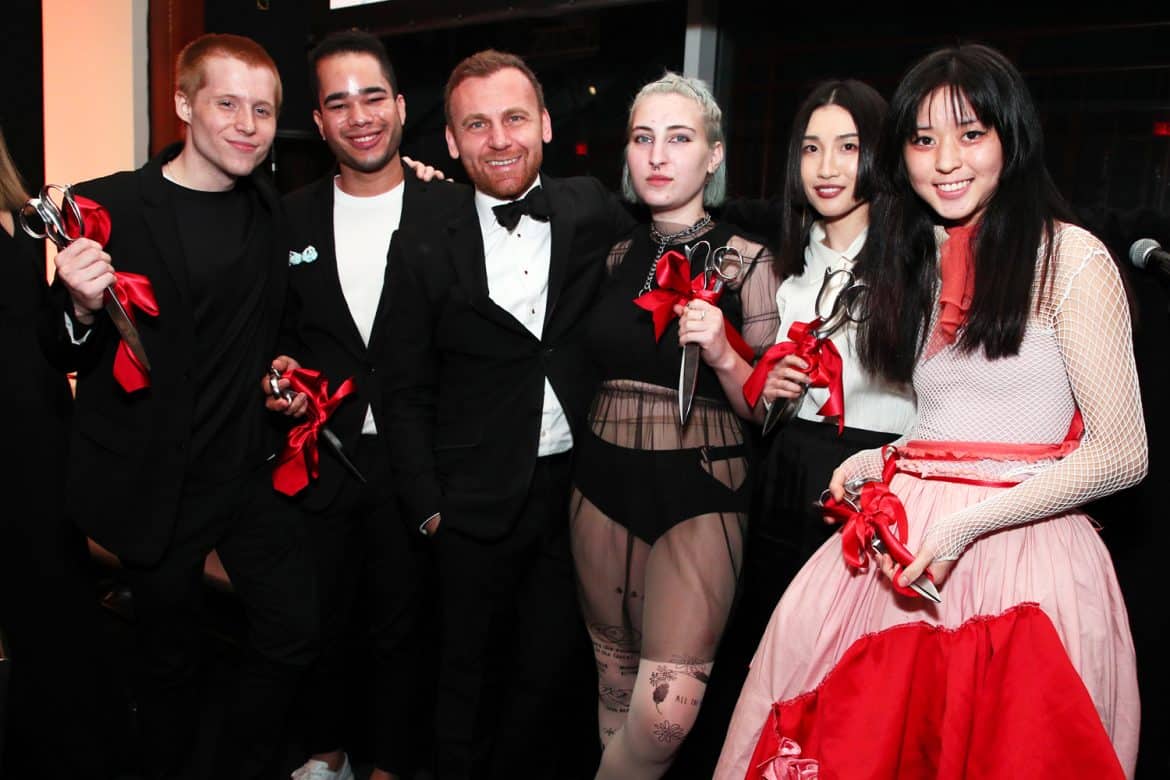Last month, Parsons School of Design held its 71st annual benefit, a fundraiser for the school that also gave awards to five graduating students. Learn their names now, because one of them may just end up being the next big thing.
1. Jose Luis Cabrera, winner of the Social Innovation Award
What inspired your thesis project?
“Sons of Violence” uses fashion design to engage critical issues of domestic violence against children in the Dominican Republic through a sustainable, circular fashion system. My garments deconstruct mythologies of masculinity and violence and reimagine gender and social justice through innovative design and intentional materiality. I use materials like sugar from my home country to construct hats and accessories. As part of my project, I also founded a non-profit organization in the Dominican Republic that uses art therapy and fashion design to support children and families both socially and economically.
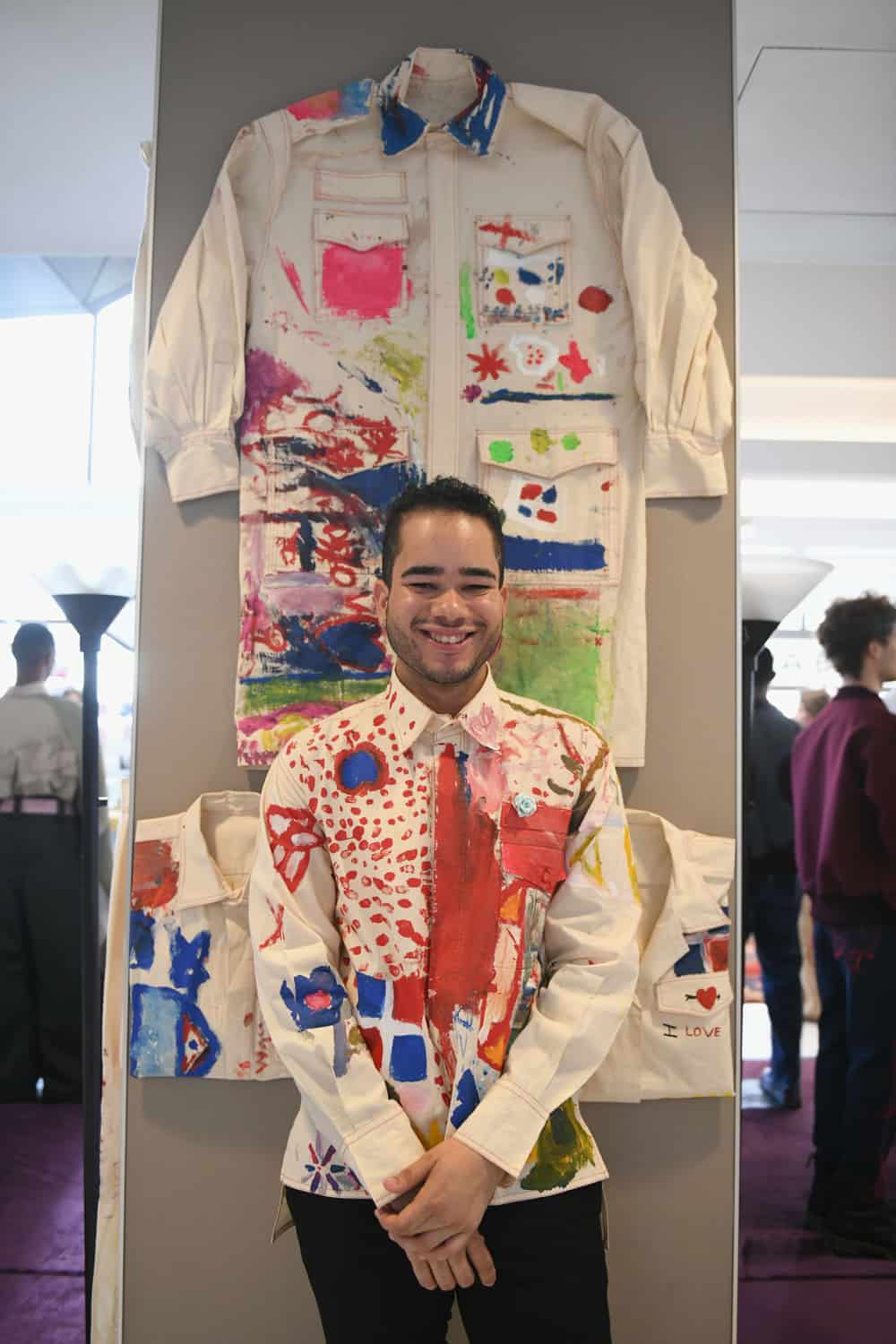
Jose Luis Cabrera (Craig Barritt/Getty Images)
Can you talk more about the not-for-profit organization you founded?
The Sons of Violence Organization seeks to improve the lives of disadvantaged children in the Dominican Republic and Latin America, through art therapy. Specifically those that have been victims of domestic violence. It as a circular system with ROA, my clothing brand.
The scraps of fabrics, yardage, and muslins produced by ROA will be delivered to The Sons of Violence Organization and partner organizations in Dominican Republic and Latin America. Art therapists will work with the children to paint on the fabrics and create while releasing the stress caused by the violence they’ve experienced. Their mothers will make clothing using the yardage of fabrics in order to earn extra income to support the family and provide their children with better living conditions. Once the garments are made they will be sold online at ROA’s website. This system reduces the negative impact of ROA on the environment, allows children to express themselves through art, unites the community by making it more sustainable, and provides a source of income to women who are usually stay at home mothers and have no economic power within the household. I am also working on gathering funds to build a house to provide the art therapy sections to the children and other educational activities. Anyone interested in donating can contact me: joseluis219802394@gmail.com.
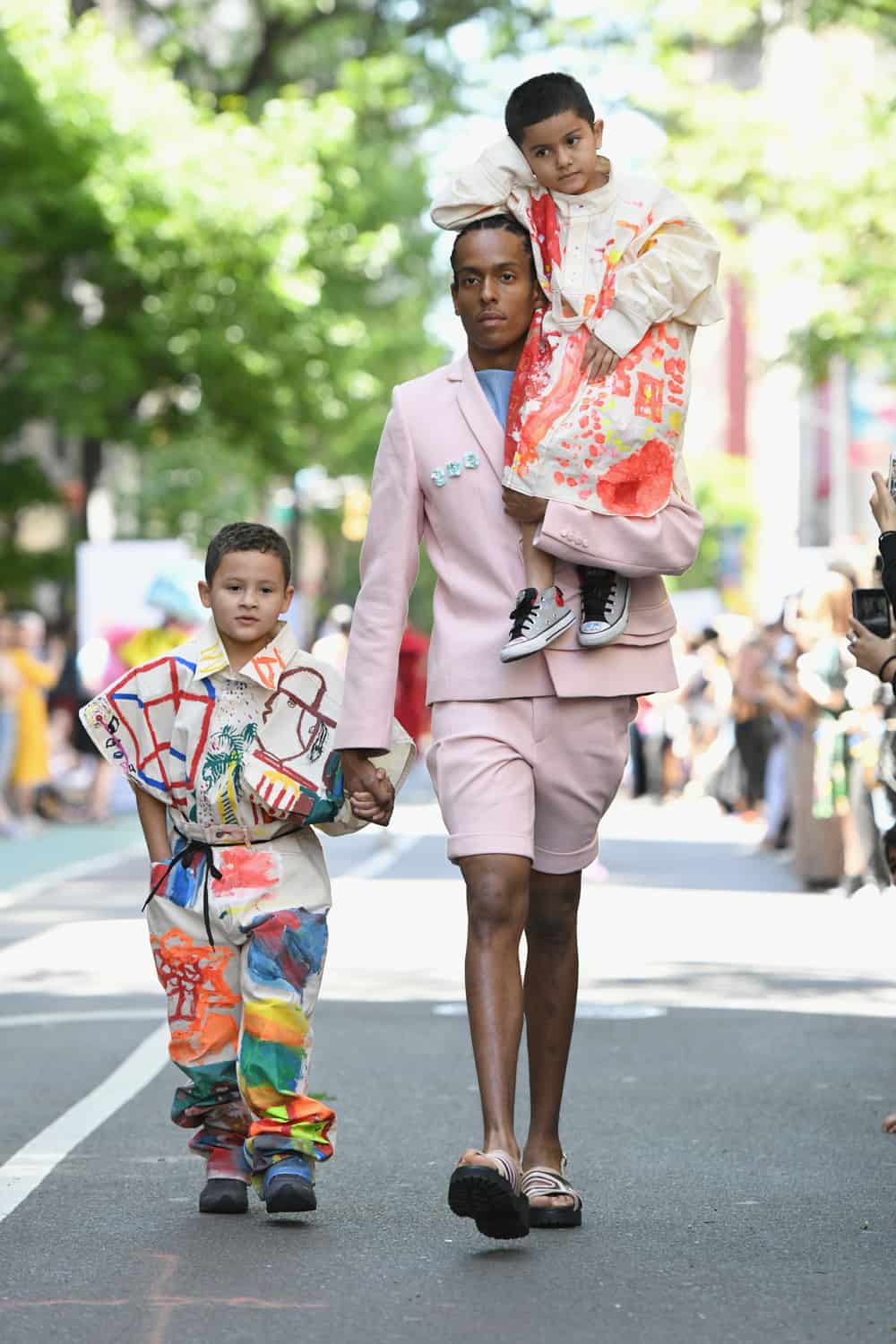
(Craig Barritt/Getty Images)
How can fashion be used as a tool for social change?
Fashion is one of the biggest industries in the world and it transcends social status, religion, culture and gender. Like it or not we are being touched by fashion in one way or another. We we are all wearing clothing and behind the clothing there are people. Fashion is a multi-billion-dollar industry that can contribute to social change. This change can start by designers becoming responsible for the product we are putting out in the world. Also, involving our communities and giving them the platform fashion offers us in order to help them be heard and therefore improve their lives. Investing money in these communities and allowing them to collaborate in the fashion industry and earn a wage is of extreme importance. We have taken away so much from underdeveloped communities, it is time to give back.
If you could dress any celebrity, who would it be?
Bad Bunny. He is the perfect example of deconstructing the mythologies of masculinity.
2. Veronica Lee, winner of the Creative Systems Award
What inspired your collection?
“Dressing Body, Undressing Humanity” is a deconstruction of human nature through the process of dress. It explores the capacity of depravity within human beings using the symbolic decaying nature of the body as a metaphor for the decline of human morality. From the over-consumption of resources, the abuse of others, the massive scale of destruction in warfare, and our individual offenses against one another, we see human beings commit atrocious acts throughout history and invariably in our daily lives.
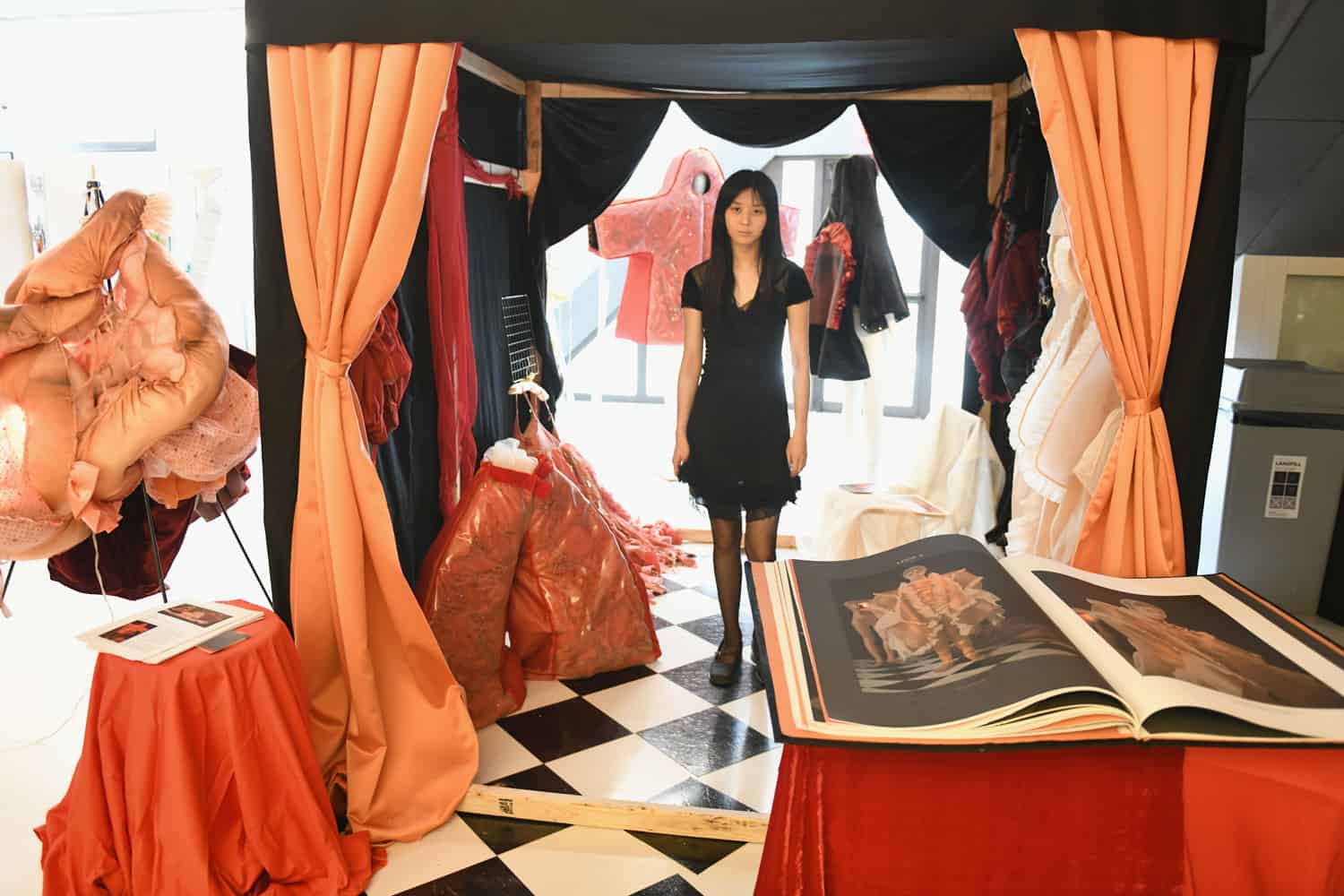
Veronica Lee (Craig Barritt/Getty Images)
The body of work demonstrates these ideas through a dichotomy of “spirit and flesh”. Flesh referring to ephemeral pleasures or urges i.e. one’s own body, wealth, material possessions, food, etc., and spirit referring to the intangible pursuits of the soul: love, peace, joy — things one can’t find in corporeal objects. Through this duality, I juxtapose this dark side of our nature with our yearning for hope and lasting satisfaction. These themes are explored through a 10-look arc: a descent into darkness, a climax/ accumulation of all human atrocities, and then the shedding of that darkness, coming into the light.
What is unique about your materials?
I developed a textile which is tulle layered on top of vinyl layered on top of red objects representing human vices. Mirrors and hairbrushes for vanity, skeleton bones and weapons for violent impulses, and fork and knives for overconsumption, etc. I utilized the “fashion print” as a surface textile. I conducted a photoshoot of people’s skin which I then used as a silk print. This makes it so that one can actually wear skin — in other words emphasizing the point that our bodies are merely vessels for our persons, just as clothing is the vessel for our bodies. I also sourced a battery powered fiber optic woven fabric from Lumigram, to represent the intangible spirit. Light is intangible, and the spirit is also intangible.

Astrid Stawiarz/Getty Images)
Your project had a multimedia aspect to it — why did you want to branch out that way?
People have many many layers to them. The whole point I have been trying to push with my thesis is the dimensionality of the human being. Someone’s essence cannot be summed up in a couple sentences. It’s the same with my concept. Using different forms of media helps to enact this multi-faceted-ness that is the essence of the human being. There is more to every person than just a four-word blurb and there is more to this work than just a 10 look “collection.”
What are your plans this summer?
I am going on tour with my band Godcaster. Music is my side hobby. When I return I will be exhibiting at the CFDA’s Fashion Future Graduate Exhibition.
3. Natalia Riedel, winner of the Social Innovation Award
What is your thesis about?
“These Days” reimagines eating disorder recovery through community and design. By creating accessible entry points to recovery including psychotherapeutic hosiery, bullshit-free packaging, a psychotherapeutic tarot deck, and body sensitive intimates, These Days moves away from the exclusive, clinical systems that typically govern treatment. Mental health care is a human right. Through design we have an incredible opportunity to subvert our cultural approach to mental illness and the way we experience living in a body.
In what ways did you use fashion to translate the themes of your collection?
All of the hosiery is screen printed with mindfulness activities and emotional regulation and distress tolerance skills. The hosiery becomes a wearable cheat sheet for remembering your Dialectical Behavioral Therapy skills that can be difficult to cognitively access when you’re escalated or triggered. Also the bras and underwear are constructed with non-linear closures because recovery isn’t linear. Adjustable waistbands, straps and overlapping panels allow the wearer to adjust the garment to their body instead of manipulating their body to fit a garment. Our bodies are constantly changing. We get bloated, some of us bleed, and our garments should be able to shift with our bodies.

Natalia Riedel (Craig Barritt/Getty Images)
How does your project extend the conversation beyond clothing?
These Days [@recoverythesedays] makes recovery conversations, adaptive coping, and therapy accessible beyond medical buildings that you need an insurance card to even enter. Having an eating disorder and even being in recovery can feel isolating because of cultural stigma. We’re building community by talking about mental illness and normalizing coping. But beyond the tangible coping objects These Days is a platform for accessible therapy groups and for designers to collaborate and focus on bringing mental health care to the forefront of their designs.
What drew you to the fashion industry?
My mom taught me how to sew when I was 12. I’ve always loved making things with my hands and especially garments because they’re lived in and change and take on new lives when other people wear them. I think it was Parsons that taught me to challenge the norms of the industry and to use fashion as a tool for social change.
How did you sourced your materials?
All of the hosiery used for the stockings is dead stock sourced from non-profits. By reclaiming unused hosiery, industry byproducts become a resource and no new nylon needs to be produced. The intimate apparel is constructed predominantly from flax fibers. Flax is a less water-taxing crop than cotton and produces biodegradable fabric.
4. Yayi Chen, winner of the Creative Systems Award
What can inspired your thesis collection?
It explores the invisible identity of Chinese laboring women in the immigrant community, and it’s based on my personal experience growing up as a Chinese immigrant in Spain. The collection aims to question the objectified and overlooked laboring bodies of women in the immigrant community as well as the poetic relationship between the invisibility of women’s identities and their working space. So I’m exploring this concept through transforming objects from the interior space into garments worn by my models.
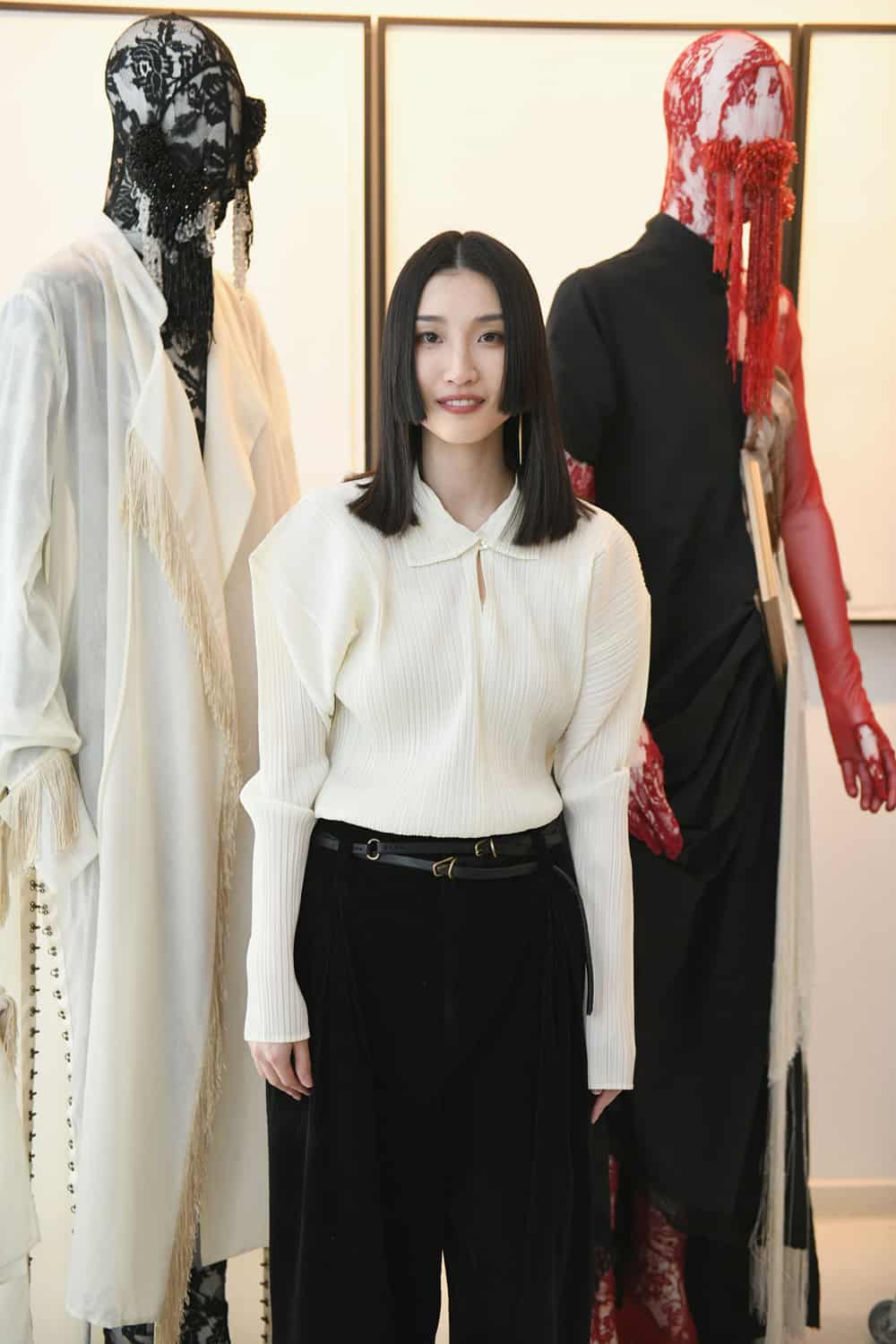
Yayi Chen (Craig Barritt/Getty Images)
Why was it important for you to create an entire experience for your collection?
I wanted to explore the relationship between women and their working space, because I think the laboring body of women has a really strong impact between the human body and the space. And I wanted to explore fashion in relation to fine art and performance to bring make concept a cross-disciplinary conversation between the fashion world and the fine art world. The project involved a collective of people from the same community — the Chinese immigrant community — in Europe. Collaboration is a really key element to my fashion project… it was a one year long collaboration project.
You were sponsored by the lace manufacturer Solstiss — how did that impact your work?
I made bodysuits with beading using Solstiss lace specifically because I wanted to use lace as a symbolic element of Europe. The florals and the transparency reflects the invisibility of women that I want to show through my work as well. The lacy bodysuits work as the base of each look and are like the second skin of women. I’ve also been exploring a lot of translucent textiles through knitwear and lace at the same, time because transparency is the language I want to use to enhance the idea of invisibility and the objectified bodies of women.

(Craig Barritt/Getty Images)
What drew you to the fashion industry?
I always have a passion to work with art and fashion because I grew up in Spain which is a city full of great art. And I also come from a family… my mom worked in the fashion industry… so I was always inspired by her. She started as an immigrant worker in Spain but then she also followed her dream into fashion and she was a great inspiration to me. And also since high school I’ve been studying fine art, so… eventually I found that fashion is this medium to me to express my passion and also I think, fashion is the way we apply art to the human body and ultimately became my expression of my self reflection.
5. Andrew Davis, winner of the Future Textiles Award
What themes were you referencing in your collection?
The collection came about through processing a loss in my family. It also became an exploration of the new rules you can create when you have limited resources. This work was first very rooted in materiality. It started with a lot of material experimentations that were more abstract. Through the process of doing fittings and research, I started to build it into clothes. There’s a point where the collection just starts to build itself. I wanted it to be embodied in myself too, so I also took a lot of reference from clothes that I wear.

Andrew Davis (Craig Barritt/Getty Images)
How did you turn waste into materials for clothing?
I wasn’t looking to spend a lot of money on my collection so I had to find ways around that, which I think forces you to be more creative. I was fortunate enough to have been given bags and bags of production waste scraps, so I took those and manipulated them in various different ways. There is no yardage of fabric in my collection, and no new materials, which I guess happened on accident.
What drew you to the fashion industry?
It took me a long time to realize what I liked about fashion. I never had one moment of suddenly wanting to be a designer, but I guess I knew I wanted to work in a creative environment. Once I made my work more personal I started to connect with it much more.
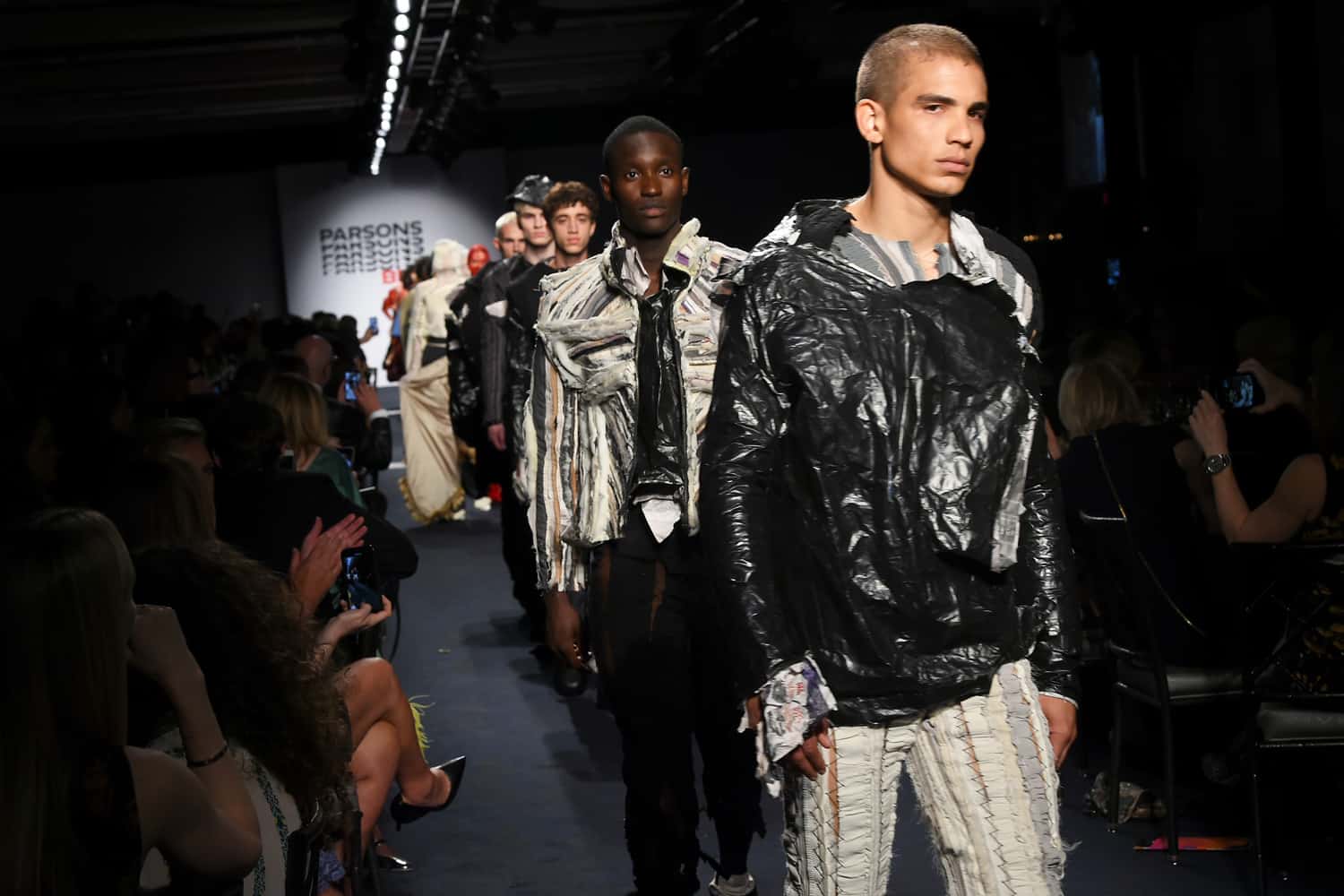
(Ben Gabbe/Getty Images))
Who are some fashion icons you would like to work with or for in the future?
Jun Takahashi or Vivienne Westwood.
If you could dress any celebrity, who would it be?
Definitely Lil Uzi Vert or Tom Cruise.
Subscribe to our newsletter and follow us on Facebook and Instagram to stay up to date on all the latest fashion news and juicy industry gossip.

